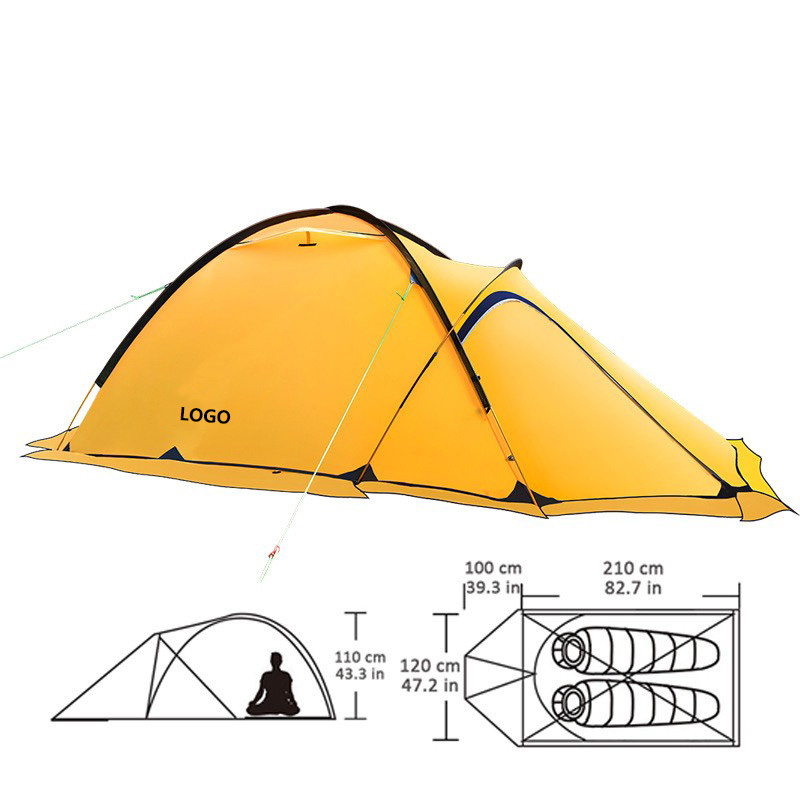Waterproof And Snowproof Mountain Tents
2023-10-17
Waterproof and snowproof mountain tents are specialized outdoor shelters designed to withstand harsh weather conditions typically encountered in mountainous regions. These tents are specifically engineered to provide reliable protection from rain, snow, wind, and cold temperatures, ensuring the safety and comfort of mountaineers and outdoor enthusiasts during their expeditions.
Key features of waterproof and snowproof mountain tents include:
1. Waterproof Materials: These tents are constructed from waterproof materials such as high-quality ripstop nylon or polyester. The fabric is treated with water-resistant coatings or laminations to prevent water from penetrating the tent walls.
2. Snowproof Design: Mountain tents feature a design that prevents snow from accumulating on the roof and sides. The rainfly (outer layer) is extended close to the ground to create a barrier against blowing snow and cold winds.
3. Strong and Durable Poles: The tent poles are made from lightweight yet robust materials like aluminum or carbon fiber. They are designed to withstand the pressure from heavy snow loads and strong winds.
4. Seam Sealing: Critical seams of the tent are sealed to prevent water and snow from seeping through the stitching.
5. Ventilation: Despite being fully enclosed, mountain tents have ventilation systems, often in the form of mesh panels or vents, to allow proper airflow and minimize condensation buildup inside the tent.
6. Snow Skirts: Some mountain tents come with snow skirts, which are additional fabric flaps around the base of the tent that can be buried in the snow to create a seal against drafts and drifting snow.
7. Guy Lines and Stakes: These tents usually come with ample guy lines and sturdy stakes to anchor the tent securely to the ground, enhancing stability during extreme weather conditions.
8. Four-Season Versatility: Waterproof and snowproof mountain tents are often referred to as four-season tents because they are designed to handle the challenges of winter camping as well as the milder conditions of spring, summer, and fall.
When choosing a waterproof and snowproof mountain tent, consider factors such as size (capacity), weight, ease of setup, and the specific weather conditions you expect to encounter. It's also crucial to practice setting up the tent before your mountain expedition to ensure you can efficiently pitch it in challenging conditions.
Remember that mountain environments can be unpredictable and demanding, so investing in a high-quality, reliable tent is essential for a safe and enjoyable outdoor experience.



